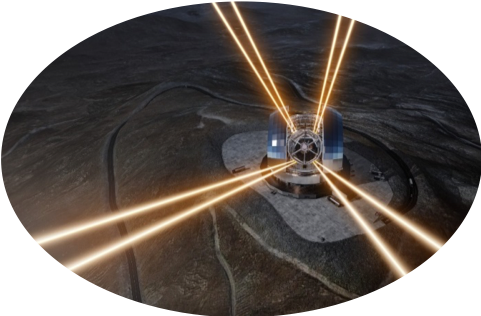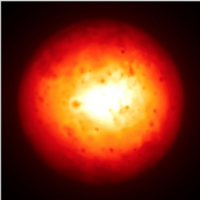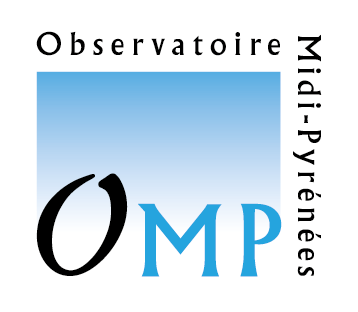HARMONI paves the way for the scientific exploitation of ELT
French laboratories (1) including IRAP (Université Paul Sabatier de Toulouse and CNRS) have just reached a major milestone for HARMONI, the very high resolution imaging spectrograph of the Extremely Large Telescope. With a primary mirror 39m in diameter, the ELT is the largest optical telescope ever built by the European Southern Observatory (ESO), the European agency for ground-based astronomy. HARMONI’s exceptional performance will allow astronomers to answer fundamental questions, from the research and characterization of extrasolar planets to the formation and evolution of the first galaxies in the Universe.

HARMONI has just successfully completed its preliminary concept phase. Within a European consortium led by the University of Oxford, the French laboratories (Marseille, Lyon, Grenoble and Toulouse) as well as ONERA have largely contributed to this success. The teams are now mobilized to finalize the design, and to start integrations and tests from 2021. This is a decisive step towards the first observations planned for 2025 and HARMONI is the very first ELT instrument to have taken this step!
Another piece of good news for HARMONI in 2018 is that the ESO Council has just approved funding for a Laser-Assisted Adaptive Optics* (LAO) module to further improve the instrument’s performance and ensure exceptional image quality over almost the entire sky.
A unique instrument
With its 8 m high, 10 m long and 6 m wide, and a total weight of approximately 40 tons, HARMONI will be a unique instrument with exceptional capabilities. With a spatial resolution of 10 milliseconds of arc (which would enable it to distinguish a tennis court on the moon or a petanque ball in Paris from Marseille) and a spectral resolution of 3000 to 20000, HARMONI will offer astronomers unequalled performance in probing the Universe in wavelengths from the visible to the near infrared (0.6 to 2.5 micrometers) and thus provide answers to the major questions of 21st century astronomy. In particular, it will allow the observation of the very first galaxies formed in the Universe and will highlight their impact on re-ionization up to a spectral shift of z = 10. A deep field of HARMONI will reveal these very first galaxies, the early star generations and the first enrichments of the intergalactic medium.
To provide unparalleled information
HARMONI will provide information of unparalleled precision on the childhood of galaxies, only 1 billion years after the Big Bang. HARMONI will pave the way for a detailed understanding of the evolution of chemical composition, dark matter content, morphology, and stellar formation over a period of more than 5 billion years in the history of the Universe. Thanks to Adaptive Optics, HARMONI will be able to dissect the core of these galaxies, highlight the presence of black holes, measure the properties of gas and black holes, and study the links with the stellar formation of these galaxies.
In the local Universe (in a radius of ~100 million light-years around the sun), HARMONI will be able to solve the different star populations within nearby galaxies, to trace back the chemical and dynamic evolutions and thus to decode the individual history of these galaxies. Still in the near Universe, HARMONI will be able to detect the presence of black holes of intermediate masses (102 to 105 solar masses), objects whose nature is currently poorly understood.

Within the Milky Way, the spatial resolution of HARMONI will open a new window on the study of brown dwarfs and planetary mass objects, especially in young clusters. One of the particularities of HARMONI will be the implementation of an observation mode dedicated to the detection and characterization of extrasolar planets. Their spectral analysis, via the measurement of the abundances of various molecules, will allow a better understanding of their formation, and the physics and chemistry of their atmospheres.
Finally, within our solar system, HARMONI will provide images whose quality is close to that of current probes. HARMONI will thus be able to follow storms on Neptune, volcanoes on Io, or interactions between Europa and Jupiter. Precise mapping of asteroids and trans-Neptunian objects will be within the reach of astronomers.
To fully exploit the unique image quality of the ELT, the heart of HARMONI will consist of its Adaptive Optics (AO) modules, whose objective is to correct in real time for disturbances introduced by the Earth’s atmosphere. Indeed, these disturbances cause a significant loss in performance: without Adaptive Optics, the ELT would deliver an image quality equivalent to that of a 20 cm amateur telescope. HARMONI will be equipped with two systems: a conventional AO system (SCAO) and a wide-field, laser star-assisted AO system (LTAO).
Notes
- The laboratories involved are the Laboratoire d’Astrophysique de Marseille ( LAM, AMU/CNRS/CNES), the Centre de Recherche Astrophysique de Lyon ( CRAL, CNRS/UCBL1/ENS de Lyon), the Toulouse Institute of Research in Astrophysics and Planetology ( IRAP, CNRS/CNES/Univ Toulouse III), the Grenoble Institute of Planetology and Astrophysics ( IPAG, CNRS/UGA) and the French Aerospace Research Centre ( ONERA).






